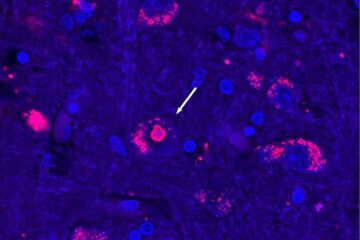Answer to age old question: Is visual recognition by wholes or by parts?

In Letter to Nature, NYU and Syracuse neuroscientists prove that we read by detecting simple features
Do we visually recognize things — words or faces — by wholes or by parts? Denis Pelli of New York University and Bart Farell of Syracuse University have answered that question in their forthcoming Letter to Nature. Their article, “The Remarkable Inefficiency of Word Recognition,” is accompanied by a “News and Views” piece discussing their work.
Using the example of letters and words, Pelli and Farell prove that we read by detecting simple features. This makes word recognition very inefficient. Even for the five most common three letter words — the, and, was, for, him — people cannot read the word unless the features of each letter are identifiable. The features in question are simple, much smaller than a letter.
In hundreds of thousands of trials, the researchers tested readers’ ability to recognize letters and words displayed at various contrasts. Comparing human performance with that of the mathematically defined ideal observer, they found that our visual system does not directly recognize complex familiar objects — such as words — but in fact relies on the detection of smaller elements — features — and only then recognizes the object of which they are the parts.
Just as modern radios suppress static, our eye suppresses the ’static’ of countless weak features that would otherwise besiege us. Pelli and Farell show that this hush comes at the cost of reduced efficiency in seeing complex objects like words.
“One of the interesting aspects of these findings,” says Prof. Pelli, “is their counterintuitive character. Readers feel that they are reading whole words, but our research shows that vision has a bottleneck, and must independently detect simple features in order to see anything. Everything we see is a pattern of features. Even after we read millions of three-letter words, the’s, and’s, and but’s are still just patterns of features. We never learn to recognize them as single features.”
Media Contact
More Information:
http://www.nyu.edu/All latest news from the category: Life Sciences and Chemistry
Articles and reports from the Life Sciences and chemistry area deal with applied and basic research into modern biology, chemistry and human medicine.
Valuable information can be found on a range of life sciences fields including bacteriology, biochemistry, bionics, bioinformatics, biophysics, biotechnology, genetics, geobotany, human biology, marine biology, microbiology, molecular biology, cellular biology, zoology, bioinorganic chemistry, microchemistry and environmental chemistry.
Newest articles

Recovering phosphorus from sewage sludge ash
Chemical and heat treatment of sewage sludge can recover phosphorus in a process that could help address the problem of diminishing supplies of phosphorus ores. Valuable supplies of phosphorus could…

Efficient, sustainable and cost-effective hybrid energy storage system for modern power grids
EU project HyFlow: Over three years of research, the consortium of the EU project HyFlow has successfully developed a highly efficient, sustainable, and cost-effective hybrid energy storage system (HESS) that…

After 25 years, researchers uncover genetic cause of rare neurological disease
Some families call it a trial of faith. Others just call it a curse. The progressive neurological disease known as spinocerebellar ataxia 4 (SCA4) is a rare condition, but its…





















